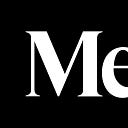Solve the right problems by questioning your assumptions
👋 Thursday!
Issue #262: balancing confidence and humility, serious hobbies, and hi-res writing
By Harris Sockel
Humans have a problem-solving instinct. Our urge to solve problems is so strong that we’ll often think of solutions before we’ve fully understood what we’re trying to fix.
One of the classic (and kind of funny) examples is Juicero — the wi-fi connected blender that raised over $100 million and tanked one year later. It promised to annihilate your bananas and blueberries with enough force “to lift two Teslas.” (It was also $700.) No one bought it because it didn’t solve a real problem. Another example: Blackberry tirelessly optimized its tiny chiclet keyboards, believing their sinking sales were a symptom of a hardware problem, when their software was the real turnoff.
Understanding the problem you’re facing is difficult, because problems usually aren’t what they seem. In the Medium archive, entrepreneur Jasper Kroese writes: “Remember, customers will rarely hand you solutions. Use your creativity and intellect to uncover what they are trying to tell you.” He recounts how Disney World was once wringing its hands over the problem of annoyingly long lines for rides. Obvious solution? Limit the number of visitors allowed in the park, or build more rides. After digging deeper into the problem, though, they found a better solution: install videos, audio storytelling, and beautiful signage in each waiting area. The real problem (which no customer would ever say) wasn’t a long wait, but an unpleasant one.
Let this be your sign to sit with your problems this week — which is hard! Problems are uncomfortable. One way to get closer to a problem is by questioning, or at least naming, the assumptions you’re making (i.e. that people hate waiting in long lines). The hardest problems are usually one or two unquestioned assumptions away from being solved.
📈 Also today: confidence and trust
- A former VP of engineering on every good leader’s best trait: “confident humility,” i.e. being skilled enough to recognize and admit when you’ve messed up. (Vinita Bansal)
- Public health director René F. Najera, MPH, DrPH remembers leading a team of nurses in northern Virginia as they went door to door explaining the risks of Covid in early 2020. It taught him the nature of trust, which to him is a delicate soufflé: “It takes effort to create, can collapse easily, and requires attention at every stage.”
✍️ Your daily dose of practical wisdom
Write to experience what you care about in “higher resolution.” (Henrik Karlsson)
Deepen your understanding every day with the Medium Newsletter. Sign up here.
Edited and produced by Scott Lamb & Carly Rose Gillis
Questions, feedback, or story suggestions? Email us: tips@medium.com
Like what you see in this newsletter but not already a Medium member? Read without limits or ads, fund great writers, and join a community that believes in human storytelling.

